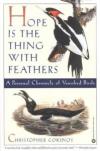When I was an undergraduate at Indiana University I was awed by the size and scope of the Main Library. I marveled at the huge foyer and the sprawling card-catalog. After I graduated, I had a couple of jobs in the library system and briefly considered a library science degree. Turns out, I loved libraries. Even after moving to Kansas, I returned to use the IU Library while I began to research the curious natural histories of extinct North American birds. That journey had started along the Kansas River when I saw what turned out to be a pair of black-hooded conures being chased by a hawk. They escaped the bird of prey just as they had escaped a cage somewhere—or perhaps they’d been deliberately released? In any case, as I learned about such exotic birds—they certainly don’t belong in Kansas—I discovered that a settler girl a century prior had stood more or less in that same spot and had seen native Carolina Parakeets, bright green and orange birds that had populated the eastern third of North America and were tough enough to endure snow storms. They were not, however, tough enough to endure human beings. They were extinct.
I was captivated by their story and, soon, those of other species, such as the Passenger Pigeon and the Ivory-billed woodpecker. Often returning to Indiana to visit family, I made trips to the IU library, borrowed a book cart and found reams of material on these creatures. But when I saw a notice in Poets & Writers for a creative fellowship at the American Antiquarian Society I knew I had to apply. I was stunned to be accepted. And delighted. There I would find gems.
Those summer weeks in Worcester were a mixture of discipline and awe. Each time I stepped in the reading room, I felt the gravity of the collections—all this history gathered, cataloged and shelved, the magic of knowledge kept. I worked harder than I had ever worked before, reading newspaper accounts of the flocks of Passenger Pigeons (millions and billions of birds darkening the sky for hours, even days) and lingering over the color illustrations in Alexander Wilson’s American Ornithology. It was there he told of capturing an irate Ivory-bill and securing it in his hotel room, only later to find the bird had trashed the place. They are big woodpeckers, after all.
The greatest surprise should not have been a surprise. Many of these birds were consumed as part of the wild-game market, feeding not only local towns but distant, growing cities. The AAS librarians pointed me to the cookbook collection. It was there I found recipes for cooking Passenger Pigeons. It was there I learned that servants in Boston were tired of having to eat so much Heath Hen—the eastern subspecies of the Greater Prairie Chicken. The cookbooks made the lives of these vanished birds more real than anything else. They had been here, they had been taken for granted, they had been part of the domestic lives of countless of Native and European Americans. What I found at the AAS immeasurably enriched my book Hope Is the Thing with Feathers: A Personal Chronicle of Vanished Birds. The AAS was so important to this project that, when the time came to do the book launch, it happened right there in the reading room where I had spent so many rewarding hours. I still have the mini-poster announcing the event.
But I just didn’t learn about extinct birds at the AAS. I learned to love archival work, recovering lost stories, forgotten voices. When I next wrote a book about meteorites and meteorite hunters, I delved not into a library but a couple of filing cabinets that then contained the papers of Harvey Nininger, a professor at a small college in Kansas who quit his job during the Depression in order to hunt meteorites. He changed the course of science. Working with disorganized files stuck in a tiny office was a far cry from the ritualistic work of encountering rare books, manuscripts and newspapers at the AAS. But the reverence I learned there carried over to my meteorite research and beyond.
Now writing a series of essays about the Moon, I have encountered the stories of female astronomers who worked against multiple obstacles as they attempted to chronicle possible, visible changes on the lunar surface, a highly controversial field even today. Sitting in the living room of one of the daughters of these astronomers, surrounded by papers, ephemera and photographs, I summoned the awe and discipline I felt at the AAS. This past year I even helped the University of Arizona Special Collections organize the papers of a pioneering lunar astronomer.
The fellowship at the AAS not only helped me write my book on extinct birds. It has paid forward as I continue dig into and savor the necessary art of historical nonfiction research: bringing to life on the page what is gone but must be remembered.

